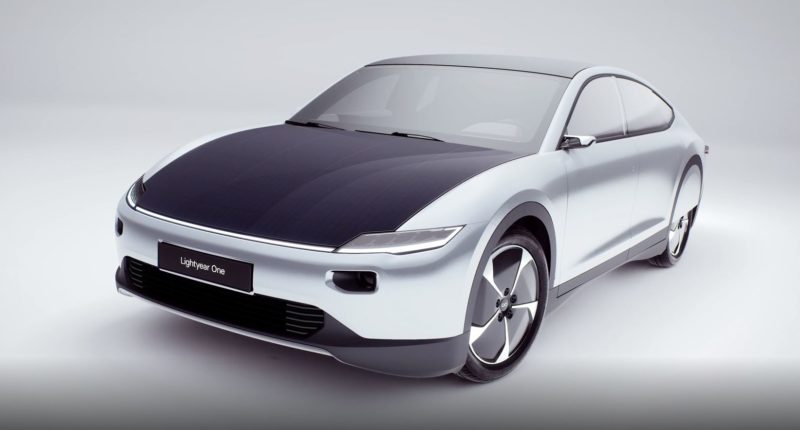With automakers entering the EV arena, the tech that they employ for charging these cars still depends on conventional electricity, which comes from non-renewable energy sources. Since last few years, Tesla has changed (or at least tried changing) this using solar powered grids for charging its electric vehicles. Nonetheless, almost every EV is dependent on charging grid which limits its range and isn’t actually the zero-emission vehicle which it is supposed to be.
Lightyear, a Netherlands based startup, is changing this scenario by launching a prototype vehicle which is fully solar-powered. Lightyear One, is supposed to be most promising electric car as of yet. It is said to have an extensive range of 800km, if fully-charged.
The company started as Stella and had won the World Solar Challenge race in 2013, 2015, and 2017. It’s greatest achievement was traveling the Highway 1 between L.A. and San Francisco without producing any emissions. The company has come a great distance since Stella and improvised not only the vehicle’s design but also its performance and efficiency.
Lightyear One has a sleek design and spacious interiors. The car has been optimized to give maximum aerodynamic coefficient. To achieve this, the company has optimized every part of the car, even its side mirrors and luggage compartment!
The car has a smaller battery compared to other electric cars which reduces its weight considerably. Due to reduced weight, the car gives better performance. The company has also ensured that the car maintains passenger safety standards.
On the Worldwide Harmonised Light Vehicles Testing Procedure (WLTP) cycle, the car gives a range of 725km. The company guarantees a range of at least 400km in winters, at highway speeds and with heating on. Otherwise the car will provide a range of 500km to 800km, which is considerably more than any Tesla vehicle.
Lightyear One has four independently driven wheels which are powered by a battery which utilizes solar cells integrated on its roof and hood. The solar cells cover 5 meter-squared area of the roof and hood which produces a power at 12km/h as it goes. When fully charged the vehicle can cover a distance the distance between Amsterdam and Paris without stopping for charging.
The car will enter production in 2021. And it is said to have over a hundred bookings already. Reservations are available for 500 additional units for the initial release. However, one needs to pay around $136,000 to reserve a Lightyear One.
The company will be producing a smaller batch initially. The car is priced at $170,000, which is bit more expensive than a Tesla Model S. Considering the features however, it seems a reasonable price. With an exciting new charging technology and long range, Lightyear One is clearly looking to revolutionize the EV domain. We can hope that this will inspire other electric vehicle developers to introduce even better tech creating more sustainable and emission free cars.





